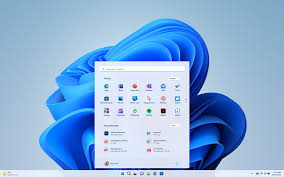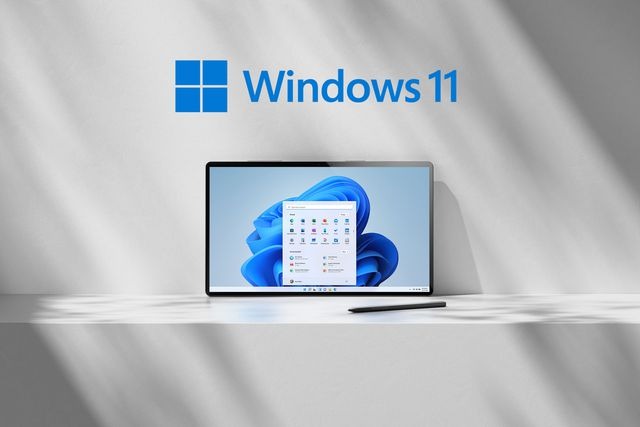Microsoft Closes the Door on Windows 11 Supporting Older Hardware. This decision reflects Microsoft’s commitment to optimizing the software for modern technology, ensuring better performance, advanced security, and compatibility with emerging hardware standards. For users with legacy systems, the announcement represents a significant challenge, potentially requiring hardware upgrades or the continued use of outdated operating systems.

This stance marks a turning point in how the tech giant views its ecosystem’s evolution. With Windows 11, Microsoft has imposed stringent requirements that prioritize processors released in the last few years, enforcing compatibility with features such as Trusted Platform Module (TPM) 2.0 and Secure Boot. These specifications underline the company’s focus on user security, recognizing that legacy hardware often lacks the ability to mitigate contemporary cybersecurity threats effectively.
Understanding the Hardware Requirements of Windows 11
Windows 11’s hardware requirements are designed to align with modern computing standards. The operating system demands processors that meet specific performance thresholds, as well as security and reliability benchmarks. A notable inclusion is the necessity of TPM 2.0, a hardware-based security feature designed to secure encryption keys and sensitive data. Additionally, Secure Boot ensures that the system firmware verifies the digital signature of the operating system, preventing malware or unauthorized software from loading during the boot process.
The requirements extend to specific processors, including AMD Ryzen second generation and newer, Intel 8th generation and newer, and select Qualcomm Snapdragon processors. This effectively renders many older CPUs unsupported, even if they continue to perform adequately on Windows 10. For users attempting to install Windows 11 on unsupported hardware, Microsoft has implemented barriers that may restrict access to updates or create compatibility issues.
To ensure users can determine whether their hardware meets the criteria, Microsoft provides the PC Health Check tool, which scans systems for compliance. This utility highlights areas where hardware may fall short, offering clarity on upgrade needs.
| Windows 11 Key Requirements | Minimum Specification |
|---|---|
| Processor | 1 GHz or faster, 2+ cores on a compatible 64-bit processor |
| RAM | 4 GB or more |
| Storage | 64 GB or larger |
| Firmware | UEFI, Secure Boot capable |
| TPM | Version 2.0 |
| Display | 9-inch display, 720p resolution |
| Graphics | DirectX 12 compatible graphics |
Rationale Behind Microsoft’s Decision
Microsoft’s decision to limit Windows 11 support to newer hardware stems from a need to create a secure and efficient computing environment. Legacy systems often struggle with performance bottlenecks and lack critical security features, exposing users to vulnerabilities that modern systems can mitigate. By setting a baseline for hardware, Microsoft ensures that Windows 11 can deliver on its promises of speed, stability, and resilience against cyber threats.
The inclusion of TPM 2.0 as a core requirement underscores the emphasis on hardware-rooted security. TPM chips are vital for modern cryptographic operations, such as encryption, authentication, and secure booting. These features are increasingly necessary in a world where ransomware attacks and data breaches have become pervasive. Additionally, by focusing on newer processors, Microsoft leverages advancements in architecture, such as better power efficiency and integrated AI capabilities, ensuring Windows 11 users benefit from cutting-edge technology.
Challenges for Users with Legacy Systems
For those running older hardware, the decision poses significant challenges. Many users are reluctant to upgrade functional machines, particularly if they have invested in high-end components that still perform well. For these individuals, Microsoft’s decision might seem exclusionary, pushing them toward costly upgrades or alternative solutions.
One option is to remain on Windows 10, which Microsoft will support with updates until October 14, 2025. However, this is only a temporary solution. As the end-of-support date approaches, users will need to consider upgrading their systems or transitioning to alternative operating systems. Additionally, businesses relying on legacy systems may face logistical hurdles, such as budget constraints and the complexities of updating large-scale infrastructures.
Community and Industry Reactions
The decision to exclude older hardware has sparked mixed reactions among users and industry observers. Some applaud Microsoft for taking a firm stance on security and performance, recognizing the importance of future-proofing its flagship operating system. Others, however, criticize the move as overly restrictive, arguing that it unnecessarily alienates a portion of the user base that could otherwise continue using Windows 11 without issue.
Tech forums and online communities have become hotbeds of discussion, with users sharing workarounds for bypassing Microsoft’s hardware restrictions. While these methods often involve modifying system files or utilizing unofficial tools, they are not without risks, such as reduced stability and compatibility issues. Additionally, systems installed using these workarounds may not receive critical security updates, undermining the very purpose of Microsoft’s hardware requirements.
Balancing Progress with Accessibility
The debate over Windows 11’s hardware requirements highlights the broader challenge of balancing technological progress with accessibility. On one hand, Microsoft must innovate to stay competitive and meet the demands of a rapidly evolving digital world. On the other hand, the company has a responsibility to its vast user base, which includes individuals and organizations relying on older hardware.
By establishing firm hardware requirements, Microsoft ensures that Windows 11 can fully leverage modern capabilities. However, the company also faces pressure to address the concerns of users left behind. Future updates or policy changes could provide compromises, such as extended support for select older hardware or alternative versions of the operating system tailored to legacy systems.
Looking Ahead
As Microsoft doubles down on its vision for Windows 11, the focus will likely shift toward driving adoption and addressing user feedback. The company’s decision to exclude older hardware sets a precedent for future operating systems, signaling a departure from its historically inclusive approach. For users, this development underscores the importance of staying updated with technological advancements to remain compatible with emerging software ecosystems.
In the coming years, you can expect further innovations from Microsoft that build on the foundation established by Windows 11. Whether through improved security protocols, integration with emerging technologies, or enhanced performance features, the operating system’s trajectory is one of constant evolution. For users, adapting to these changes will be essential in navigating the ever-changing landscape of personal computing.
With this decision, Microsoft has charted a course toward a future where hardware and software are more closely aligned, ensuring that the devices you use are equipped to meet the challenges of the digital era. For those willing to embrace the change, Windows 11 offers a gateway to a more secure and efficient computing experience.










Add Comment